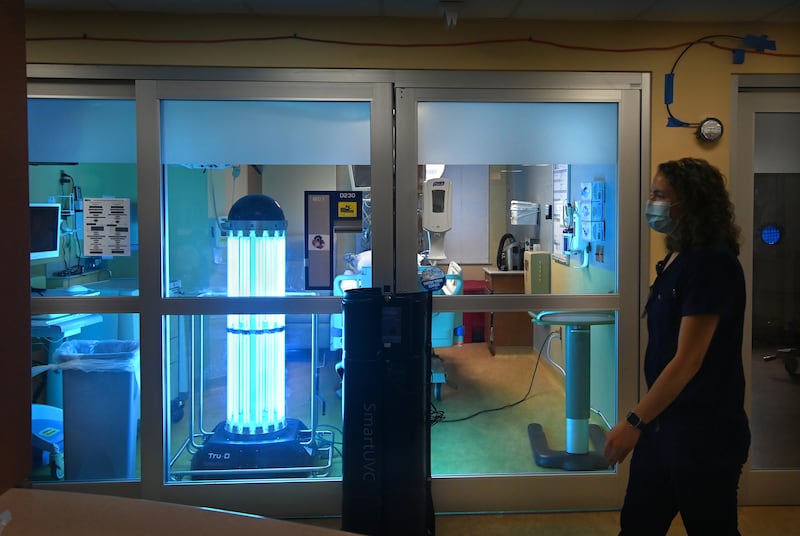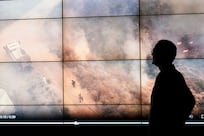A new type of ultraviolet light could be used to decontaminate indoor spaces, potentially reducing the risk of the next pandemic, experts have said.
Low doses of far-UVC – which has a shorter wavelength than conventional UV, meaning it is less harmful to human health – can kill viruses and bacteria without the safety concerns of conventional ultraviolet light, which can damage both the skin and eyes.
Experts have said if used in hospitals intermittently, the new technology could help limit the spread of infectious diseases like Covid-19 and flu.
It also holds promise in controlling the spread of bacteria including Methicillin-resistant Staphylococcus aureus (MRSA) and Clostridioides difficile, which contribute to more than 3.5 million healthcare-associated infections occur in the European Union every year, resulting in more than 90,000 deaths.
What is UV light
According to the UCI Beckman Laser Institute, UV light is a type of electromagnetic radiation which is transmitted at waves in varying wavelengths and frequencies.
The sun produces three different types – UVA, UVB, and UVC, the latter of which has the shortest wavelength and highest energy of all three. However, it never makes it to the Earth’s surface due to the blocking effect of the ozone layer.
Artificial UVC is a known disinfectant, which can damage the genetic material of bacteria and viruses – while also causing burns of the eye and skin, in a way that is similar to UVA and UVB rays.
UV light’s virus and bacteria-killing properties have been known since the 1940s. The technology is commonly used in hospitals and prisons to control infections.
Dubai-based airport services company Dnata has also tested a robot armed with UV light on aeroplanes.
But conventional UV light can only be used when a room is empty due to the health damage it can cause.
Studies show far-UVC also kills microbes, viruses, and bacteria, reducing infectious airborne viruses by more than 99 per cent, far greater than is usually achieved using typical air filtration and ventilation.
And its shorter wavelength means it cannot penetrate human skin, eyes or tissue, so it may be safe for continuous use around people.
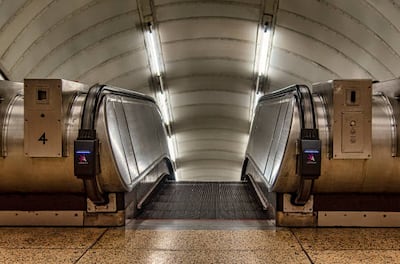
Traditional cleaning and disinfection strategies are not enough to reduce infectious pathogens, said experts.
“Compounding the problem, and a major limitation of traditional cleaning and disinfection strategies, is that disinfected surfaces rapidly become recontaminated between manual cleaning episodes”, said Dr Curtis Donskey from the Louis Stokes Cleveland VA Medical Center in Cleveland, Ohio, who will speak about the topic at this year’s ESCMID Global Congress, which will be held in Barcelona, Spain, from April 27 to 30.
“Daily cleaning of patient rooms is likely to be inadequate to reduce the burden of infectious pathogens, and manual cleaning of intricate surfaces, equipment, and devices makes thorough cleaning difficult.”
Because of this, experts have sought new technologies which can provide continuous decontamination of occupied spaces between cleaning episodes.
The holy grail, said Dr Donskey, is a technology that is effective against surface and airborne pathogens and is automated, safe, and reasonably priced.
Far-UVC is one of the most promising candidates, he said.
“Several studies have suggested that far UVC light at the current regulatory limit may be safe for use around people, but more studies are needed to confirm the safety of these rays in clinical settings and with longer-term follow-up before it is likely that they will be routinely used in occupied healthcare settings,” he said.
“It is also vital that we assess ozone concentrations because far UVC technologies have the potential to generate modest amounts of ozone.”
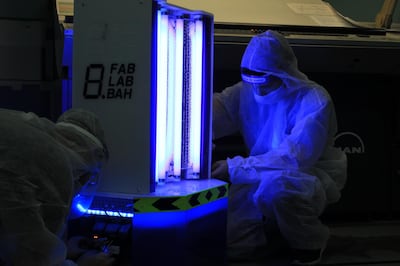
The technology is already in use in some healthcare settings.
“For example, a dental office in Ohio installed far UV-C lamps in 5 patient treatment rooms in 2020 and has operated the technology for thousands of hours with no reports of adverse effects. Partnering with such early adopters could be useful to acquire information on long-term safety of far UVC,” said Dr Donskey.
He said one approach to speed up implementation more widely would be to use it intermittently until more safety data is collected.
“Such an approach would only deliver far UVC when a room is empty and turns off when people are present,” he said.
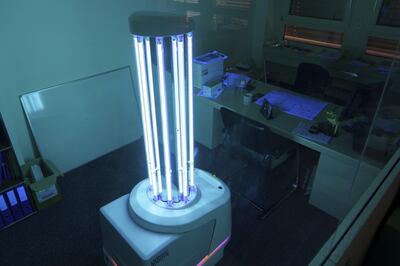
“We are currently evaluating this intermittent approach for decontamination of equipment rooms, bathrooms, sinks, and patient rooms. We anticipate that hospitals will be more willing to consider use of the technology in clinical areas using this approach while additional safety data is being generated.”
The congress will also hear about research which highlights the risk climate change poses in multiplying the threat caused by antimicrobial resistance.
Professor Sabiha Essack, South African Research Chair in Antibiotic Resistance and One Health at the Antimicrobial Research Unit, University of KwaZulu-Natal in South Africa will say climate change is known as a so-called “threat multiplier”.
Speaking ahead of the event, she said: “Climate change compromises the ecological and environmental integrity of living systems and enables pathogens to increasingly cause disease.
“The impact on water systems, food-producing animals and crops threatens global food supply. Human activities associated with population growth and transport, together with climate change increases antibiotic resistance and the spread of waterborne and vector- borne diseases of humans, animals and plants.”
